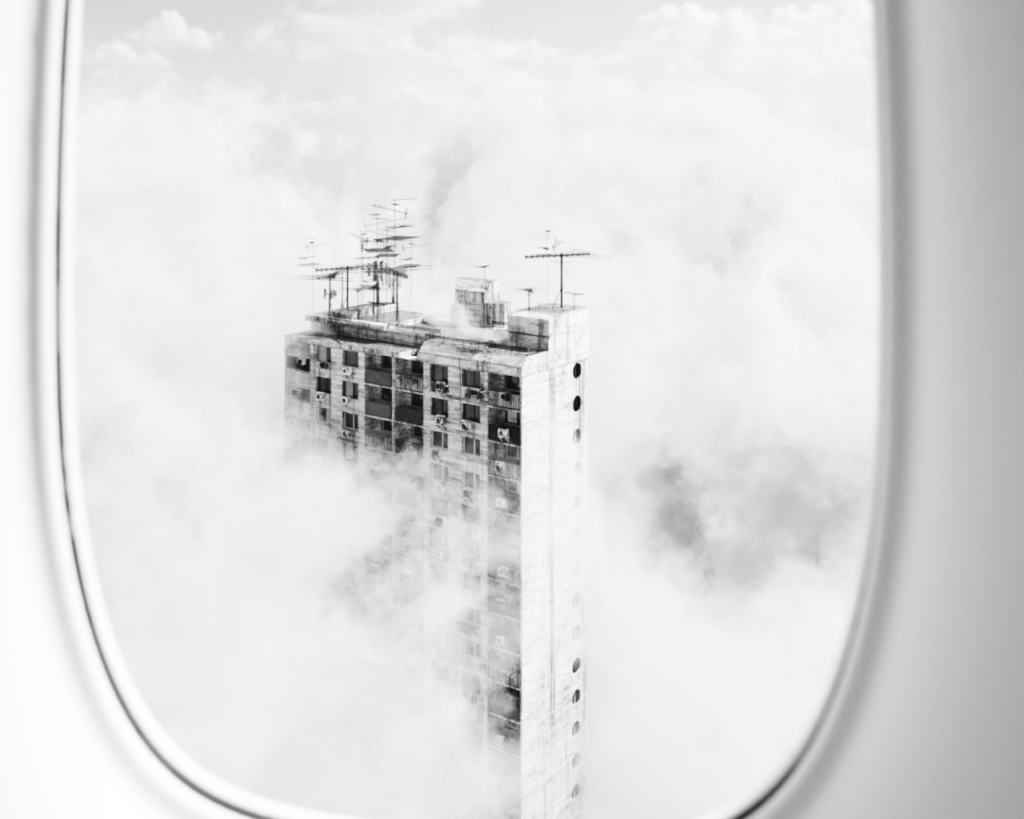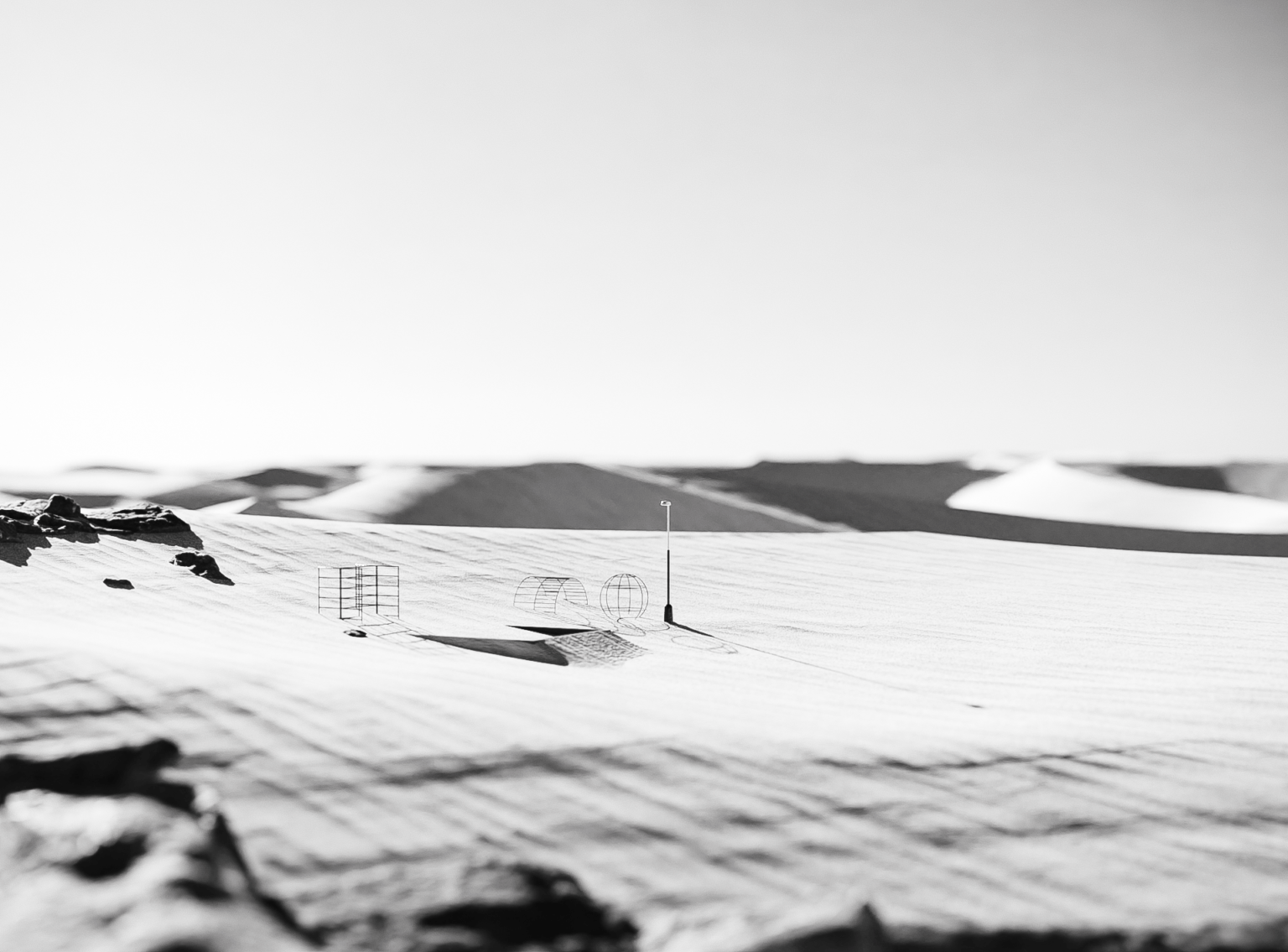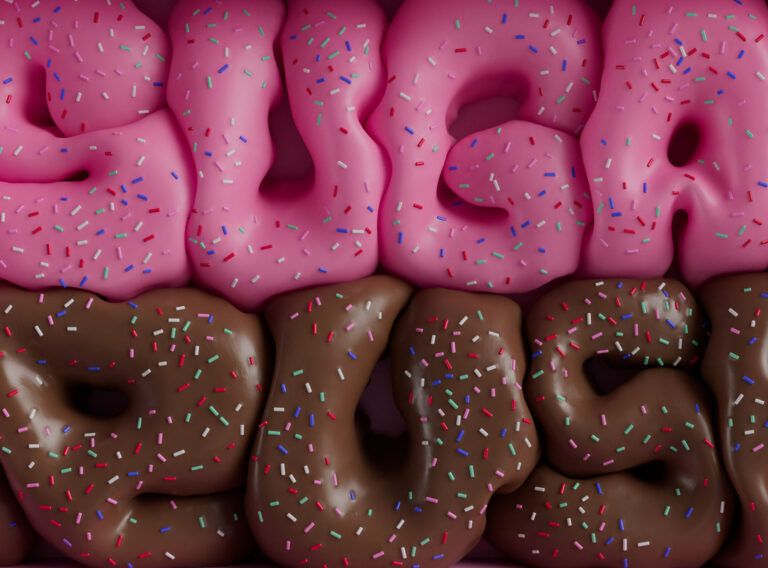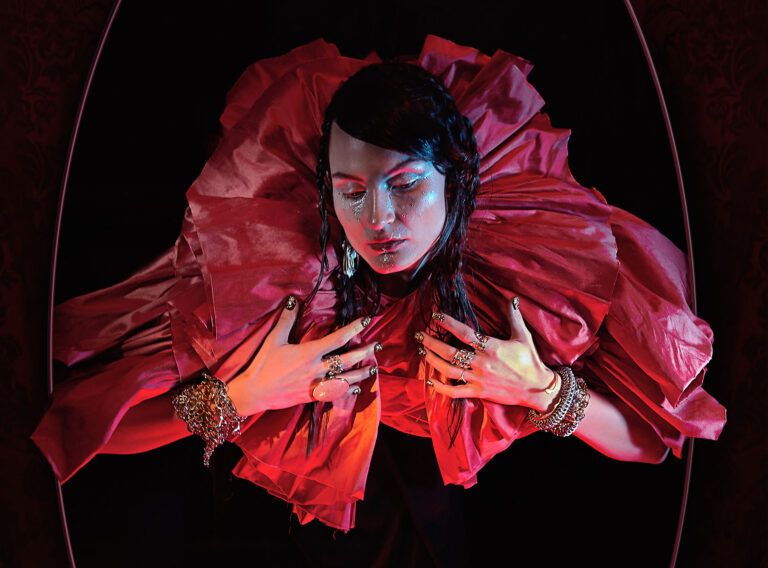Utopian visions are a defence mechanism against the inevitable apocalypse. No one ever learns, the world never changes, and it will burn. Fantasmic depictions of a future in which everyone lives in harmony are based on a tendency to close off, to create a monadological environment. Take, for example, Albert Robida’s novel Electric Life, written in 1890, where all personal and professional life takes place with the help of an interface, the equivalent of today’s FaceTime: here, potential lovers exchange expressions of affection, and large factory owners control the work of the entire industrial conglomerate. Except for hovercrafts and subways that allow for quick travel between places, the individual does not have to leave the living room. They live in a monad, contact with the exterior takes place through screens, the outside world is sidelined. A similar tendency can be observed, for example, in Marinetti’s futurism, where a new human of the future with a heart of steel controls the world with the buttons of a machine from a small control room with glass windows looking out on a perpetually illuminated, fully electrified and industrialised city. In Robida’s novel, world (and colonial) harmony is achieved in a considerably simpler way: through war, or rather, through inventions that can immediately pacify an enemy army – that is, if the weaker side, lacking sufficient economic and technological infrastructure, doesn’t prefer to avoid the conflict in advance and submit to the stronger side.
And so it almost always is with utopias. The perfect social order is primarily a dystopian one. It is essentially irrelevant whether we look to the past or to contemporary utopian visions of a common world free from war and promoting racial, economic, political, ideological, and ecological diversity. Because it is already too late. There are only two scenarios for the future. Life in small units in dire socioeconomic conditions, as described in the cyberpunk tradition from Gibson to Stephenson to the current Altered Carbon on Netflix, or a return to tribal communality along the lines of Mad Max or The Book of Eli.
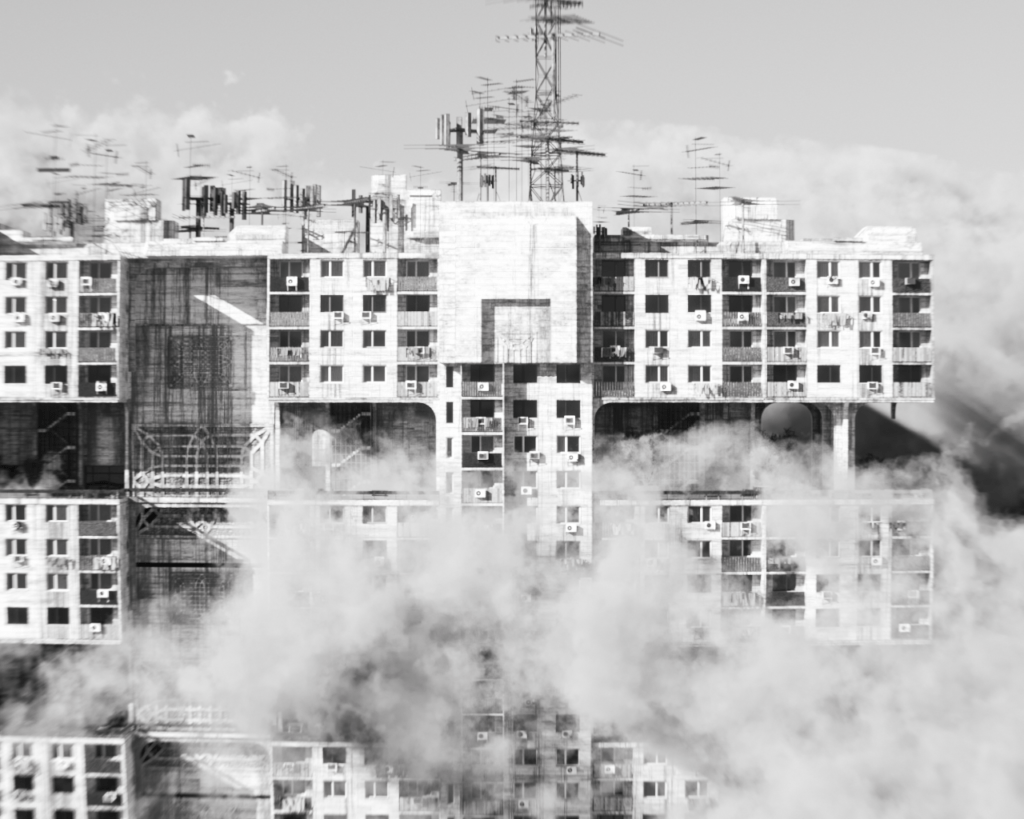
War, war never changes
That it is already too late is shown by the current audiovisual variants of dystopian post-apocalyptic worlds. In 2077, the long-anticipated global nuclear conflict could not be averted. Nuclear and hydrogen bombs rain from the sky, missile defence systems are on full alert. Selected inhabitants are immediately evacuated to the vaults to wait out the initial phase of the conflict. However, the capacity of the shelters is not very large. Most of humanity has been wiped out, and in a matter of weeks, the planet’s surface has been turned into burning radioactive wreckage, the environment has become absolutely toxic, transforming all living things that mutate into unimaginable monstrous and deadly organic forms. North America has been transformed into a Capital Wasteland, a traumatic space inhabited by death and despair. One long civilizational phase is ending, nothing will be the same; the nuclear conflict was what the post-structuralist philosophy of the second half of the 20th century would call an event: a radical change of everything in all, severing coherent and seemingly indestructible social, economic, technological and political bonds.
That’s the setting that the Fallout game series portrays. The series is based on the depiction of a post-apocalyptic world born from the rubble of a global nuclear conflict, stems from the retro-imagination of the 1950s, and thematizes the duality of living in a nuclear vault to protect select individuals and/or survivors of the nuclear conflict who inhabit a world filled with racism, radiation, and violence. All survivors can be called “nuclear ghosts”. They are a relic of the past, an index of the unchecked production of (military) technology that has led to the almost total annihilation of humanity. The meaning of life has been reduced to a single word: survive. Acting morally has become an unattainable ideal.
The imagination of a post-apocalyptic world is a post-human one that combines two dimensions. On the one hand, the need to adapt to new conditions establishes new customs, structures of communication and social orders. However, the remnants and residues of the pre-war world are omnipresent as spectres: from half-decayed buildings to soda bottles, from advertising banners to casinos that essentially function in a pre-war mode. It is a particular version of a world that anticipates the future and reactivates the past in a form that never existed. The player walks through the ruins of the world, in a melancholic narrative about the immutability of human nature. Humanity has always been and will always be heading towards its own destruction.
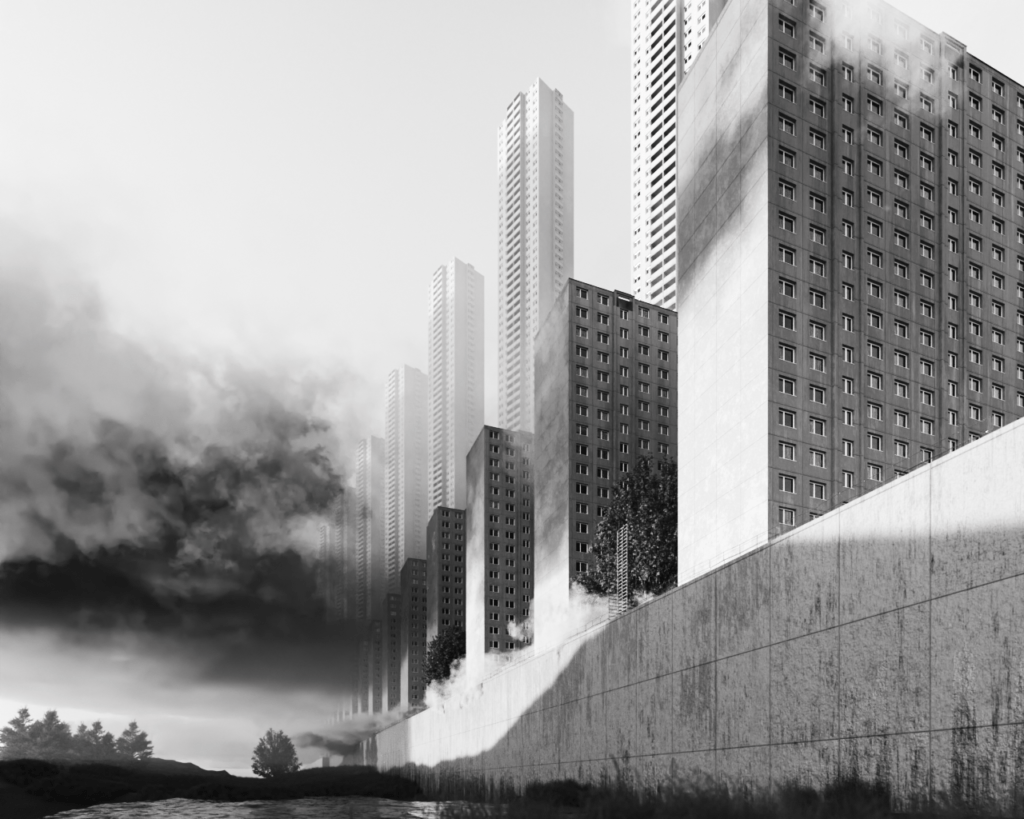
A man without sight
Nuclear and technological disasters of the (near) future are transforming humans. In the Apple TV series See, people have lost their sight. Basic human nature is transformed, leading to a fetishization of blindness and the machines of the past – they are still functional but no one knows how to fix them, and any malfunction is thus interpreted as divine wrath.
The loss of sight in See is carried by a techno-pessimistic agenda based on humanity’s ability to destroy itself. A newly born person without sight is also a form of posthuman being who has managed to adapt to new conditions in the current world, whose main motive is the age-old human tendency towards violence, subjugation of others and distrust of all those who are different. From a certain point of view, it could be argued that the gradual, multi-generational adaptation to life without sight is a sign of humanity’s ability to survive; on the other hand, human life takes place in an endless dialectic of war and peace.
As time passes, some begin to regain their sight and harmony between the blind and the sighted begins to be established in a distrustful post-apocalyptic world. Yet it seems to be an eternal return of the same survival story, based on the notion that humanity has learned from its past and that there will be an acknowledgement of the differences between different life forms. But this is unlikely to be the case. Much more likely, there will always be a group of marginalised individuals creating mimicry so that pseudo-recognition can take place, as Luce Irigaray writes, and thus power inequalities will only be reinforced.
The idea that we could prepare for a world that has undergone a nuclear catastrophe, an all-consuming military conflict or is beginning to see zombies and new forms of predators emerge through various laboratory research, is highly naive and utopian. All we can do is hope that the last of us will retain at least a vestige of humanity in situations where humanity is no longer even worth considering.
